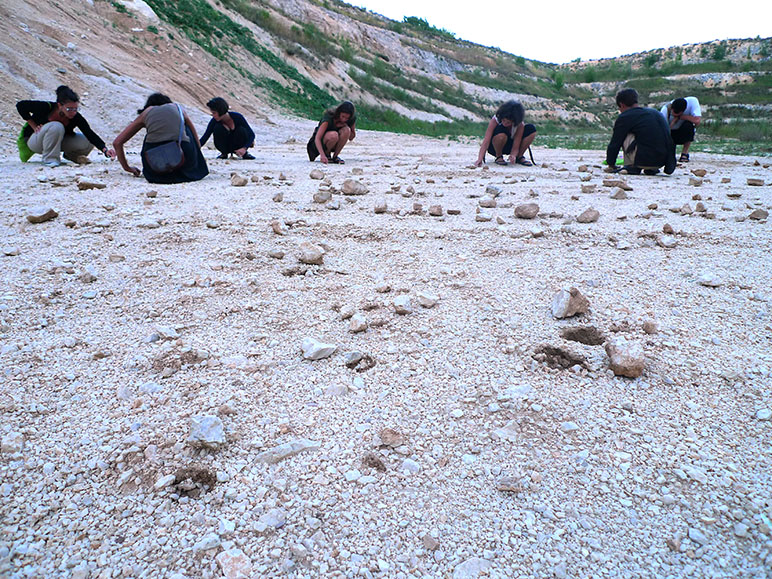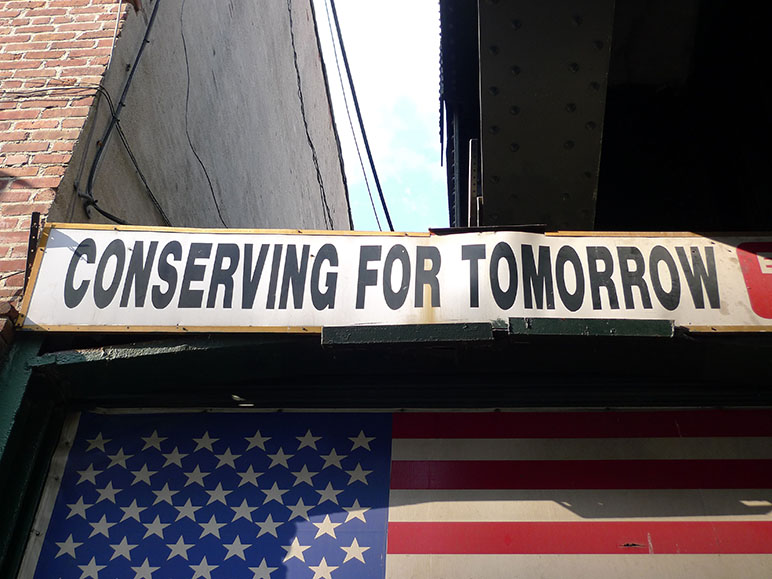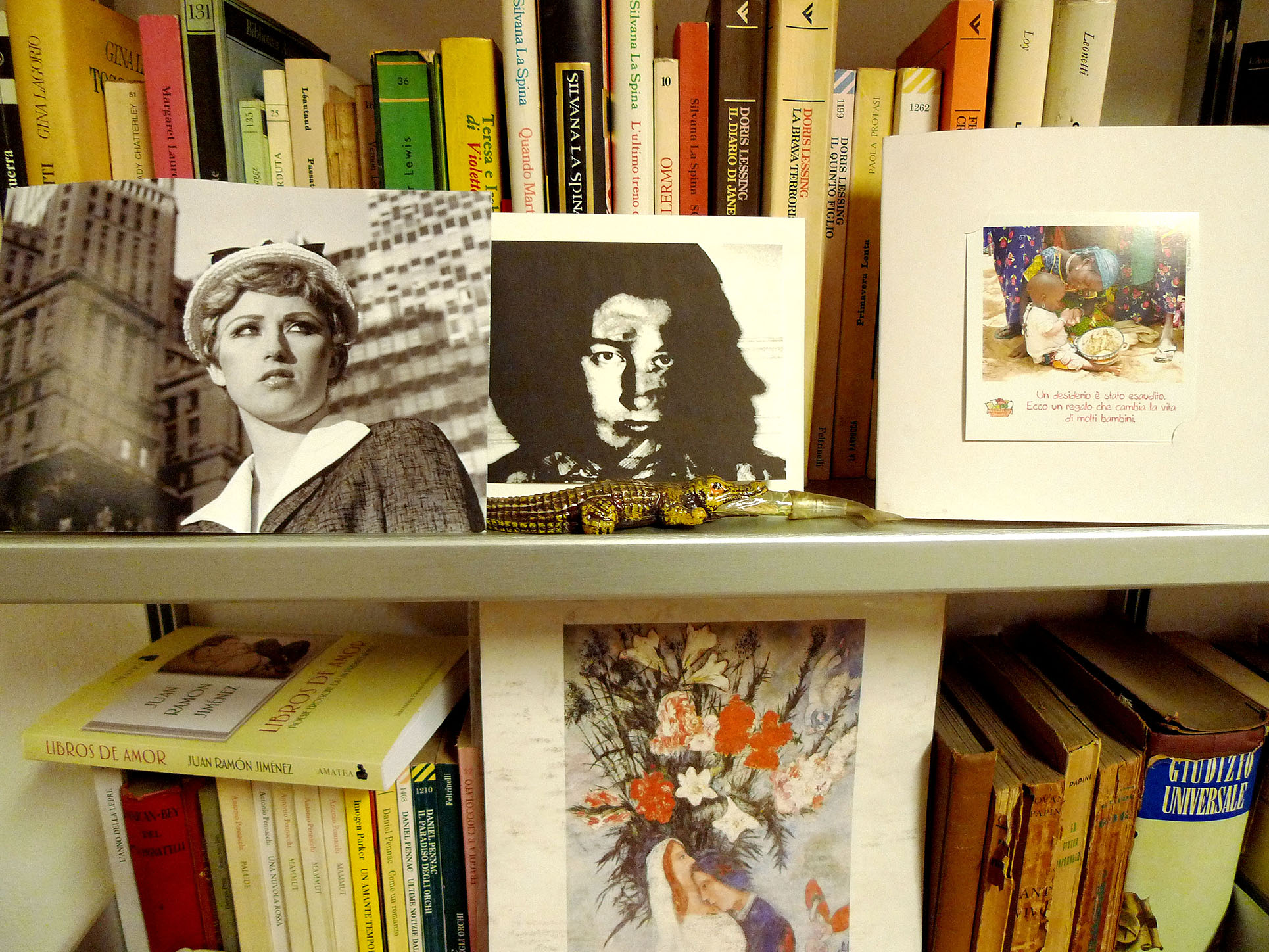The Archive of the World or whether Photography can be considered an Instrument of Knowledge
“Photographers who wished to put into order and give structure to reality sided together (…) behind the notion of ‘the photographic way of seeing’: according to them, photography was able to reveal the inherent dignity and harmony in just about any common object, any fragment of nature; it was a treatise on the real.” (1)
Rosalind Krauss
Does photography, on condition that it is organized by a precise concept which follows from a collection in a systematic order, really have the power to expand our knowledge? Is there a link between photography as a medium of perception and instrument of registration, on the one hand, and a form of knowledge – here in the sense of being a process of ordering – on the other? Can we speak of a gnoseological process attached to images, at the moment in which they appear in a form organised by precise categories? Does this mean that it would be enough to create little drawers and to label them with terms, to raise the fragments wrested by the sensory world to the heaven of ideas and to assign scientific value to any insignificant item?
I am aware of the ponderousness of this kind of inquiry, and perhaps now is the time for taking a step backwards immediately: otherwise we run the risk that the wall – from which we have just scraped off a little plaster – collapses on top of us and the entire construction of mighty Philosophy disintegrates at our feet – and we, the wizard apprentices, obviously, would not be in any way capable of putting the pieces back together again of this thousand-year-old jigsaw puzzle.
As Paolo Spinicci has written: “Like philosophers, sometimes, rather than finding out new things, we feel a need to put into order the things we already know (…) we feel confident that it should be possible, reasoning a little, to reconcile the numerous voices of our knowledge and the many certainties that make up our lives, because only in this way it is possible to feel at home in the orderly storyline of our ideas (…).” (2)
With the structure of a Russian matrioshka doll in mind, I would like to take inspiration from the methodology of the subject that I have set out to analyse: I, for my part, will proceed like an archivist who systematically arranges her inventory, or from time to time, when the logic of the arrangement proves too difficult to discern, I will transform myself into a ragpicker like the one described by Baudelaire, who “sorts things out and makes a wise choice; he collects, like a miser guarding a treasure, the refuse which will assume the shape of useful or gratifying objects between the jaws of the goddess of Industry..” (3)
They truly are many of them, the voices of our knowledge that appear under the plaster, starting with the notion of knowledge itself or what it consists of and how to deal with it. Obviously it is not possible, in this limited space and time, to revisit every floor and every room of this building (of philosophy), which rises up towards the sky (of ideas), but we could at least try to sketch in, with light and always erasable strokes, as if in pencil, what could be the principal lines of behaviour, the methodologies, systems and functioning of the cognitive processes which could help us to see more clearly the issue we intend to discuss.
What at this point I am keen to underline, above all, is the transition of a foundationalist and positivistic conception, from one aspect – firmly believing that it is possible to construct a secure and stable building of knowledge on a ra- tional framework (given that there is a solid foundation) – to a conception of knowledge which can be likened to the analogy: an assemblage of many loose pieces which can always be moved around. As Benjamin Buchloh points out: “In effect we are experiencing – in the Twenties – a movement towards archival and mnemotic forms in the collection of photography, which will become the fundamental episteme of a radically different aesthetic: that is, photomontage.” (4)
From this form of collage – as initiated by Walter Benjamin with his use of quotations in the Passagenwerk and by Aby Warburg in his Mnemosyne Atlas – we shift into postmodernity instead, into a rhizomatic structure of irregular and unpredictable networks (Deleuze/Guattari), from the linear reading of a book to reading in jumps from one link to another in the Web.
The two classical forms for the creation of a presumed scientific order, the archive with its stable, if not rigid, structures based on rational concepts which arrange into order original documents, and the atlas (in which the texts – the intelligible knowledge – are strictly linked to the images – the sensible knowledge), represent two different approaches and procedures: the first being the offspring of positivism, and the second deriving from dada-surrealist poetry. Cultural memory with important epistemological value, both together, an archive starts off with a bureaucratic function: it conserves documents – of the State, but not only – in systematic order, to facilitate more efficient research. In recent years, theories on the archive have increased in number and by now their epistemological value has become wellestablished: “The archive cannot be considered a passive depository or cemetery of entries. Rather, it has become a fixed topos in research…In this sense it could be deservedly claimed that the venue of knowledge today is no longer the library, but the archive.” (5) In reflections on the atlas, on the other hand, a tangible and aesthetic aspect is added to knowledge: “Visual form of knowledge, knowledgeable form of seeing, the atlas disrupts all these frames of intelligibility. It introduces a fundamental impurity – but also an exuberance, a remarkable fecundity that these models had been conceived to avert. Against any aesthetic purity, it introduces the multiple, the diverse, the hybridity of any montage.”(6)
Can we therefore maintain that both, the archive as well as the atlas, have an indisputable epistemological value? I don’t believe that we can, because each choice implies that something has been left out, and each memory implies that something has been forgotten. The discourse on objectivity and its right to citizenship should be of interest still, whether we are dealing with knowledge, with archives or indeed with photography. It’s not just by chance that at some point philosophers drew away from the idea of a knowable world as such. Already earlier, when Kant proclaimed that “the thing in itself” is unknowable, philosophers’ attention moved from the object to be known to the knowing subject, it’s enough to think of English empiricism which, in its most radical form (Berkeley, “esse est percipi” – “to be is to be perceived”) maintained that only that which we perceive exists. In Husserl’s phenomenology, the importance of the perceiving subject in the cognitive process remained strongly accentuated, but notwithstanding that, he never denied the existence of a Lebenswelt (‘life-world’), independent of our perception.
From these general considerations on the occurrence of knowledge, the implications of the relationship between the perceiving “I” and the objective world, how we appropriate objects of knowledge as they appear to us (phenomenologically), but equally how the process of ordering these objects, whether intellectually (archive) or by association (atlas) takes place, we may draw out the terms and functions that are strongly similar to photography. Or better still, to describe what happens when I take a photo and what happens with these images after the shot, when I paste them into an album or instead when I name them and arrange them with some application in my computer, we can use similar terms. In order to take a photo I have to perceive something, it means to decide to point the lens in the direction of this thing, to decide on the distance, the depth of the field, the lighting, until I “cut out” that object from reality and produce my photo. After that, I create an archive of my shots and define folders with a certain name. I will, therefore, be archiving into categories the objects I have perceived and hence “taken” from my “life-world”. Could we therefore liken this process to the cognitive process?
From its very beginnings photography has been considered as “the mirror endowed with memory” and hence an instrument that reflects everything that is in front of it in a concrete place, in a precise instance. But this undeniable mechanical bond with the real is by no means a certain guarantee for the objectivity of photography. The debate on the role of reality as a direct impression that is basically passive and the role of the photographer as the decisive and creatively active guide came into being together with the first daguerrotypes, and did not leave untouched the discourse on the archive either: in both cases there is an operator who makes decisions on what to choose – in an archive, what to include, and in photography what to portray – and in both cases everything else remains left outside; everything that wasn’t chosen to form part of the archival or photographic memory, fallen into brutal and irreversible oblivion and at risk of being lost to the future.
August Sander’s project Menschen des 20. Jahrhunderts [‘People of the Twentieth Century’] which created a record in progress of the society he lived among in the Weimar Republic, was definitely characterised by a more systematic and consistent conceptual approach in comparison to other similar projects, such as Karl Blossfeldt’s plants or Eugène Atget’s Parisian streets. Through his portraits, Sander attempted to highlight the types that characterised the society of his age, and in order to be able to do so, created precise categories. Ideally the thousands of pictures would not speak of one concrete individual (the one in front of the lens), but would rather represent a universal entity: in fact the caption almost never gives the name or surname, but a social determination such as occupation rather than class, in addition to the place and the date of the snap. Sander teaches us about the potential role and the possibilities of photography in understanding and hence deepening our knowledge of our living world, an entity in perpetual flux.
The theoretical definitions and reflections about the genre of the portrait could enlighten us further on the issues which arise from Sander’s project: since the invention of the daguerreotype in 1837, the photographic portrait had not moved very far away from the painted one, but largely drew inspiration from it. The reading was primarily individual, though, (excluding the case of allegorical representations), and so what was expected of a portrait was its likeness and along with that its “truthfulness” with respect to the face existing in real life, now reproduced as an image. By establishing categories, however, Sander takes us to another level of reading and use of the image: rather than representing a person in their uniqueness, specificity and inimitability, he seeks – while using an image of a concrete person – to approach an abstract notion, a social type and by doing so, he shifts towards a meaning that is quite different. The peasant becomes representative of the entire class of peasants, the individual is a type and disappears as a single being with a name, a surname and his or her own particular personal story. Alfred Döblin commented Sander’s intentions thus: “As if describing sociology without writing, but by presenting images, images of faces and not of traditional dress: this is what the photographer’s gaze is capable of creating, his spirit, his observation, his knowledge and – last but not least – his enormous photographic capacity. (7)
To gain a better understanding of the project, it seems to me necessary to deepen one’s comprehension of the typologies that Sander created among the vast mass of images and which as a result directed him towards the next phase in his research. The meaning of Sanderian categories was not unequivocally perceived, quite the contrary: there were those who saw it as a grandiose structural testimony of a world rushing headlong towards the catastrophe of World War II (Walter Benjamin) and those who saw it as a social classification tending towards a dramatic simplification, easily exploitable for ideological purposes (Allan Sekula). First of all we need to ask whether the categories really can teach us something about our world or whether, on the contrary, they force our reading of the images into rigid typologies, or even cancel out the rich gradations of significance that can be found only in the versatility of the unique and in the unforeseeable complexity of a phenomenon which appears in various guises to a receptive individual. Sander saw himself as part of a process in continual modification and intended the categories above all as guidelines for gaining a comprehensive overview of a complex and manifold world. The ‘People of the Twentieth Century’ thus changed, with the passing of time, from what was originally a sociological investigation of the present into a historical record, and the categories mutated into a blueprint of a society lost forever.
The very first requirement in the process of categorising and putting into order is the transformation of the visible into a physical object (the photo), which can then be transferred from the place where it was taken to the author’s storehouse: the photographic image thus becomes a portable piece of the world, and hence as a “cutting” is analysable and classifiable under some particular concept. As we well know, this dislocation is not only spatial: with the temporal displacement, an important process of recording and memory begins to operate. The photo thus becomes a witness to a time and a place that no longer exists, and this applies in much stronger measure to the portraits of persons who have undergone permanent and rapid changes. The Barthian “what was” for Sander overrides the individual and sentimental dimension and resurfaces in the memory of a historical moment with its “social categories”, these too destined to disappear to leave space for new denominations created by those who feel obliged to constantly adapt sociological stratification to the current situation.
Even if archives have existed for as long as human culture has existed, even if there have always been moments of particular attention to the systematisation of knowledge, for example, state archives, medieval libraries, the Wunderkammern (‘Cabinets of Curiosities’) of the 17th century, the encyclopaedias of the Enlightenment, the museums of the 17th century, in recent decades the theme of the archive as a system of categorisation and knowledge has become a part of postmodernist philosophical and aesthetic discussion.
The archive as the “the archaeology of knowledge” (Foucault) is seen as an institution as well as a conception, that is both a physical place and a method of working, and has established “the rules for that which could be said”. While in art the notion of archive means above all to collect and to preserve, in philosophy it refers to an epistemological figure which organises and distributes knowledge. An archive decides in what form history is available and what – on the contrary – is destined to remain inaccessible and lost forever.
In the present day, the artists who work with systems of order, creating atlases, Zettelkasten (card indexes), billboards, installations of found objects, seem to be moving towards more open forms of associative memory that are considerably less systematic and rational in comparison to classical archives. The touring exhibition, curated by Georges Didi Huberman, Atlas, How to carry the world on one’s back?(8) investigates, along the lines of the Mnemosyne Atlas of Aby Warburg, the paradigms of the archive and the atlas – inasmuch a collection is more or less systematic, and memory more or less rational or intuitive – in the realm of aesthetics and shows, in exemplary fashion, in how many different forms and concepts they can be transposed.
The diagram ‘Übersicht’ (panoramic view) of Gerhard Richter, for example, graphically charts cultural development from the Middle Ages up till today, following a timeline, in order to demonstrate the importance of the act of ordering for the epistemological process: in this case the most useful instrument of all for acquiring an awareness of history. The notebook section with drawings and annotations (Jakob Burckhardt, Meyer Schapiro, Marcel Broodthaers) or the photographic albums of Bauhaus, Hannah Höch or Bertold Brecht render visible a stage of thought still yet to be formed from transient and disconnected fragments. Contemporary artists frequently make use of the various forms of collection of knowledge, whether in an ironic key as John Latham with his Encyclopaedia Britannica or else John Baldessari, who seeks to teach the alphabet to a plant, or as an instrument of investigation bordering on the scientific: the photographic collections of Rauschenberg, Moyra Davey and Susan Hiller, or the Bulletin Boards of Matt Mullican. August Sander is present this time with photographs of plants, a counterpoint to Paul Klee with his dried flowers glued onto black cardboard: here the two artists seem to take on the role of biologists, albeit with a different aim, that is, to investigate the forms of nature from an aesthetic standpoint. Berndt and Hilla Becher, inheritors of the Sanderian Neue Sachlichkeit movement extend the research of archetypes to the field of architectonic forms. The photographs of Brassai, Man Ray and Sigmar Polke, on the other hand, go beyond so-called “objective” representation with a frontal point of view and carry over their interest in the real towards a more poetic vision. The topographic section pertaining to re elaborated geographical maps (Arthur and Vitalie Rimbaud, Aby Warburg, George Brecht and Sol LeWitt) is followed by an unexpected glance at unknown corners of cities (Walker Evans, Laszlò Moholy-Nagy). The “suggestive geographies” underline the importance of our perception and our experiences also with regard to cartography. Each person designs their own map of the city which follows their experiences and their own hierarchies of importance that they assign to places (Guy Debord, Stanley Brown). We cannot omit the manuscript of Passagenwerk by Walter Benjamin – a work similar to and contemporary with the Mnemosyne Atlas of Warburg, consisting almost completely of ordered quotations – cut up and montaged – which create a new meaning.
Huberman shows us through his project and with its rich accompanying texts how complex the relationship is between perceptive subjectivity and presumed objectivity, between the “I” and the world. Our knowledge is made up of a continuous juggling between order and dissolution, be- tween plunges into the multiplicity of things and a tablelike overview, between associative-analogical capability and tension with regard to rational order in our minds. The touring exposition thus seems to demonstrate that an aesthetic episteme can hold citizenship alongside the intelAugusta lectual one, and that sensible knowledge need not be in contradiction to the rational one.
The principle of archiving was inherent in photography right from its origins. To photograph means to choose, collect and in the final analysis to order fragments of reality. Each choice of content and form represents a particular viewpoint and therefore triggers a hermeneutical process. The archiving of images then, if we follow precise criteria and categories, corresponds to the cognitive process: our experience and our thoughts are formed through the processes of systematization of the sensory impressions that have left traces on our perception. For Plato, knowledge could not be anything other than pertaining to ideas and images were assigned the role of being copies of copies of ideas, while much later, for instance in the encyclopaedias, the images were an integral part of the systematic and scientific notion of knowledge. The project of Sander, also, which sought to achieve an overview of the society around him through the creation of a categorized order of types was, beneath it all, a gnoseological attempt to fix an image of its time in order to archive humanity. But this attempt (like every other) to enclose experience into systematic and rational categories revealed itself to be an artificial construction – a creative act also, if we wish – and hence the presumed objectivity here also is permeated by the point of view of the perceiving and thinking subject. Every archive and body of knowledge consists of, on the one part, precise selections, retained and categorised under a universal term, and which in consequence are remembered, and on the other part, of things that have not been preserved and which probably have been consigned to oblivion. Each system of order is influenced by knowledge, by taste, by the interests of its period and therefore dependent on the historical moment in which it is formed. Each photo – in the same way – is largely a conscious excerpt of the reality that the author perceives and decides to extract from the world, fixing it onto a twodimensional base, physical or digital, whatever. With each image, another piece in the mosaic of human knowledge is built up, in continual reorganization, constantly disrupting and renewing its elements and connections, both internal as well as external.
Barbara Fässler
Translated from the Italian by Terēze Svilane
(1) Rosalind Krauss, Teoria e storia della fotografia, Bruno Mondadori,
Milano, 1996, p. 162
(2) Paolo Spinicci, Simile alle ombre e al sogno, Bollati Boringhieri, Torino,
2008, pp. 12–13
(3) Susan Sontag, On Photography, Penguin Modern Classics, London,
2008, p. 78
(4) Benjamin H. D. Buchloh: “Gerhard Richters Atlas. Das Anomische
Archiv”, in Herta Wolf, Paradigma Fotografie, Suhrkamp, Frankfurt am
Main, 2002, p. 413, (translation from the German by the author)
(5) Knuth Ebeling e Stephan Günzel, Archivologie, Kulturverlag Kadmos,
Berlin, 2009, p. 12 (translation from the German by the author)
(6) Georges Didi Huberman, “Atlas, How to carry the world on one’s
back?” Catalogue Reina Sofia, ZKM Karlsruhe, SF Hamburg, 2010, p. 15
(7) Sander: Antlitz der Zeit, Schirmer/Mosel, München, 1990, p. 13,
(translation from the German by the author)
(8) Atlas, How to Carry the World on One’s Back? Curator Georges Didi
Huberman, the Falckenberg Collection, Hamburg-Harburg, 1 October–27 November. Touring exhibition, shown at Reina Sofia, Madrid,
and ZKM, Karlsruhe



